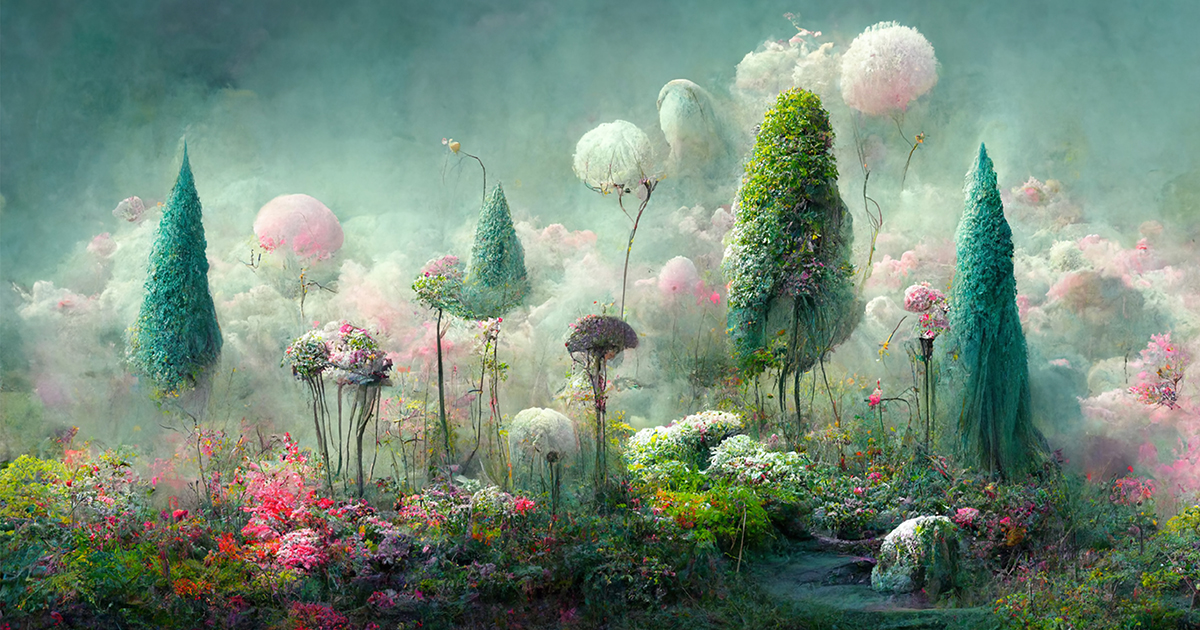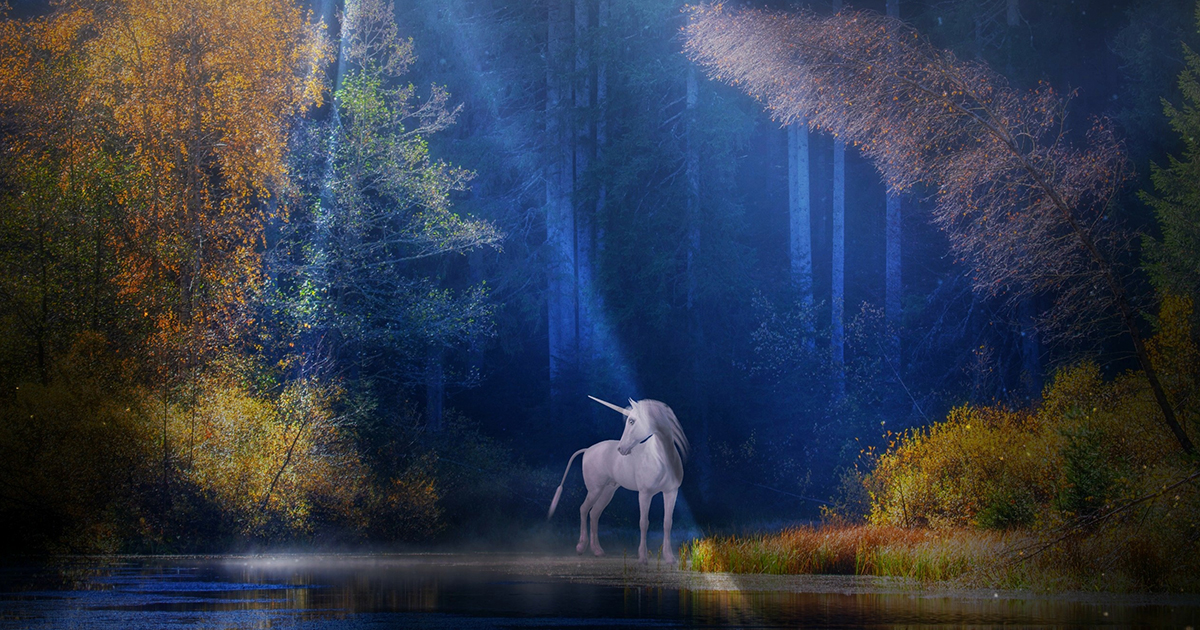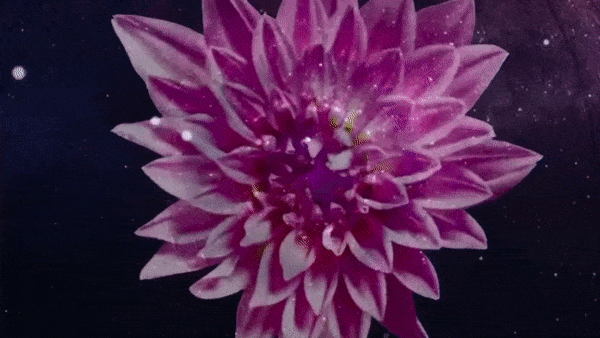
READ MORE: Creators in the Creator Economy (Adobe)
The creator economy grew by more than 165 million people over the past two years to reach 303 million creators globally, Adobe finds in its latest “Future of Creativity” study, “Creators in the Creator Economy.”
In fact, according to the report, almost a quarter of us (23%) are designated creators, contributing photography, videography, creative writing and more to online spaces like social media platforms and blogs.
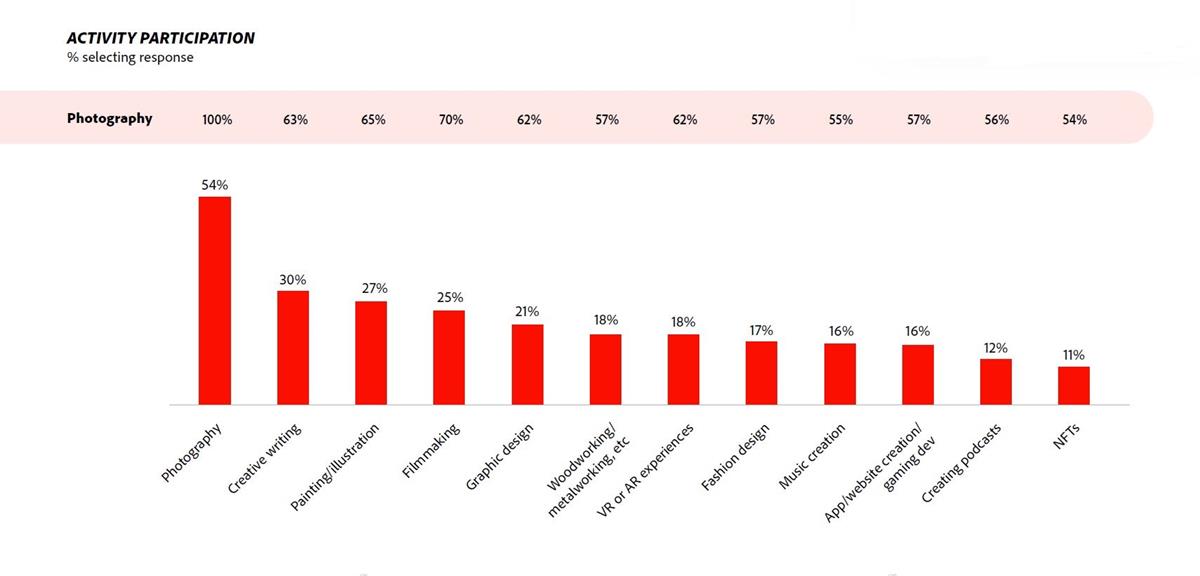
While over a quarter of creators (26%) are motivated by money, the report found, nearly half (48%) of creators “are universally motivated by the same goal: freedom of expression.”
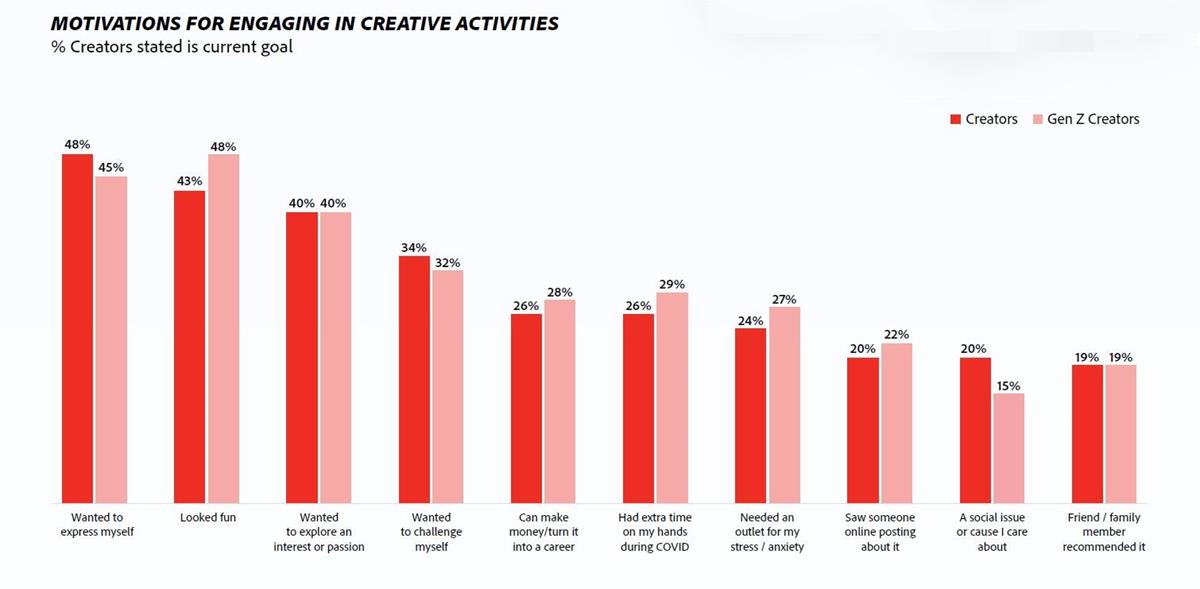
The study found that content creation can be a source of income, “but it takes time and commitment to be successful and while it remains a side hustle for most, many creators aspire to do more.”
Scott Belsky, chief product officer and EVP at Adobe Creative Cloud, explains, “The unprecedented growth of the creator economy provides a platform for everyone to be a creator. Individuals, soloprenuers, small business owners and content creators can now express themselves and explore creative and artistic pursuits in new ways.”

Adobe defines creators as professionals and non-professionals creating original content for their jobs or passions including designers, photographers, filmmakers, illustrators, hobbyists and more.
Influencers are defined here as a subset of creators with five thousand followers or more who leverage social media to impact their audience.
Per the report, Millennials represent 42% of the creator economy. By comparison, Gen Z represents 14%. Influencers make up only 14% of the global creator economy.
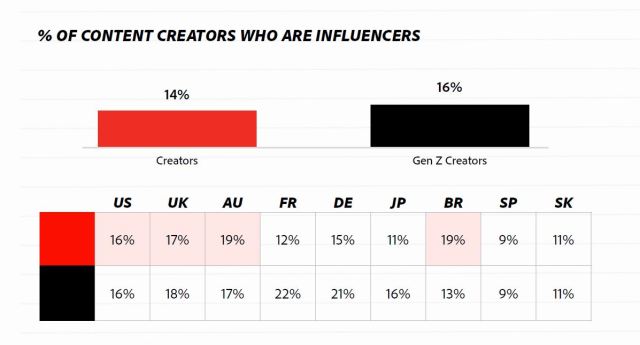
In the US alone, the creator economy grew by 34 million new creators (40%) since 2020. Brazil (+73 million new creators), South Korea (+11 million) and Spain (+10 million) also emerged as hot spots for creativity.
Nearly all (95%) of creators charted in the study take action to advance or support causes that are important to them.
“By using their creativity and influence to advance social causes, creators believe they can drive awareness (51%), give a voice to those who otherwise wouldn’t have one (49%) and make it easier to voice opinions on social causes (47%),” Adobe says.
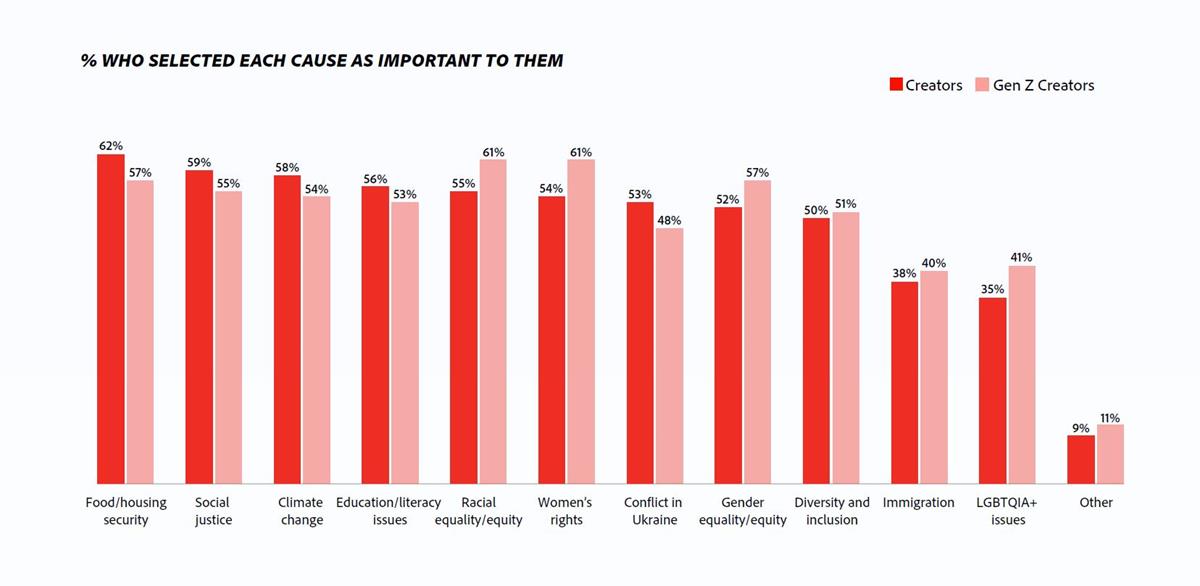
The study further suggests that the more time creators spend creating and sharing content, the happier they feel. This, Adobe pointedly notes, “is the opposite of social media consumers, who studies have shown can experience negative effects from social media use.”
The “Future of Creativity” study surveyed 9,000 online creators in May 2022 throughout nine global markets (including US, France, Australia, Japan and South Korea). Edelman Data & Intelligence conducted the study and analyzed the data.
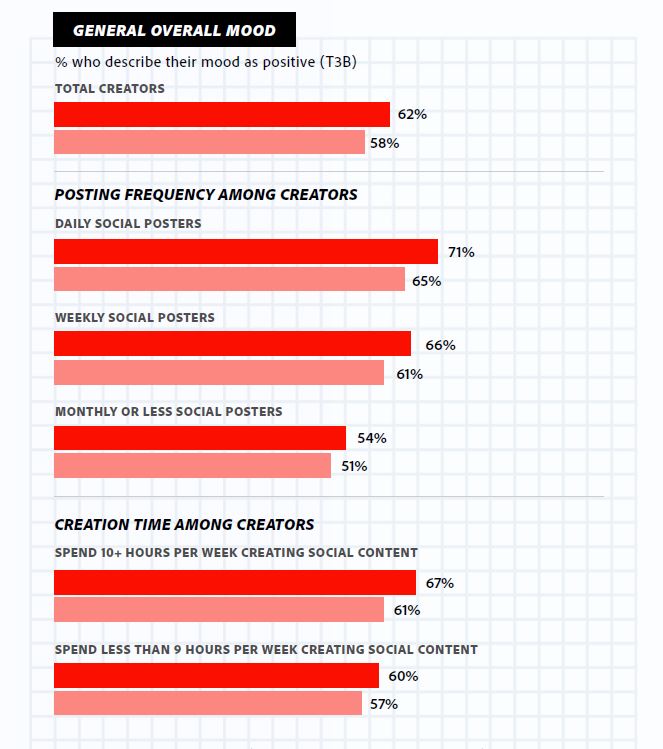
CRUSHING IT IN THE CREATOR ECONOMY:
The cultural impact a creator has is already surpassing that of traditional media, but there’s still a stark imbalance of power between proprietary platforms and the creators who use them. Discover what it takes to stay ahead of the game with these fresh insights hand-picked from the NAB Amplify archives:
- The Developer’s Role in Building the Creator Economy Is More Important Than You Think
- How Social Platforms Are Attempting to Co-Opt the Creator Economy
- Now There’s a Creator Economy for Enterprise
- The Creator Economy Is in Crisis. Now Let’s Fix It. | Source: Li Jin
- Is the Creator Economy Really a Democratic Utopia Realized?


